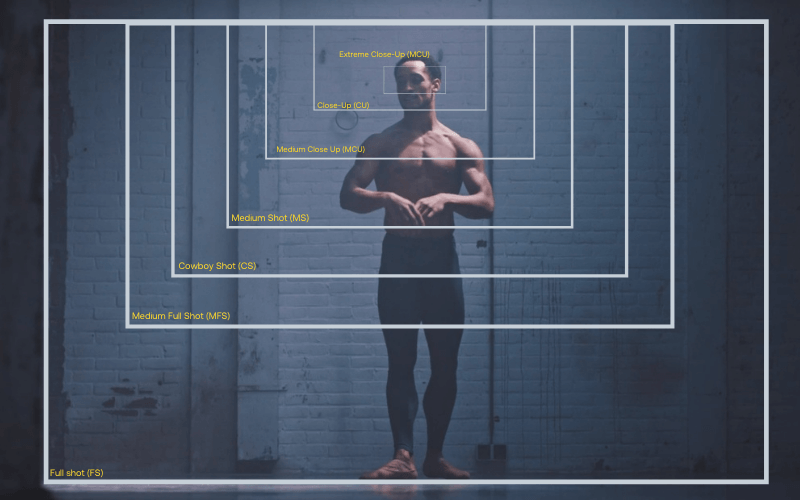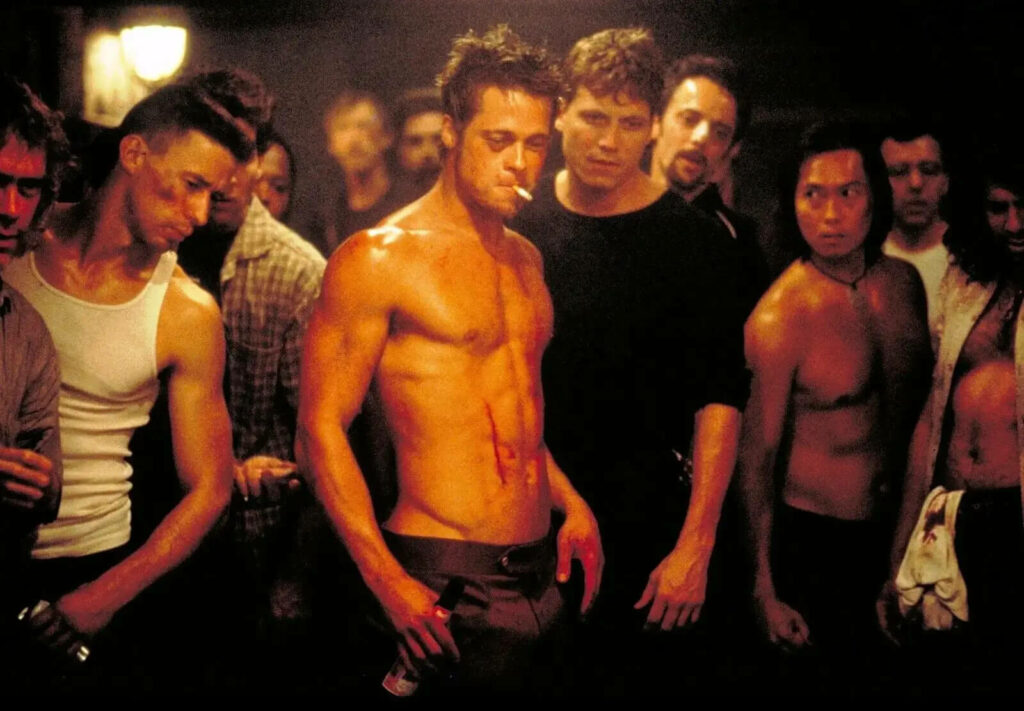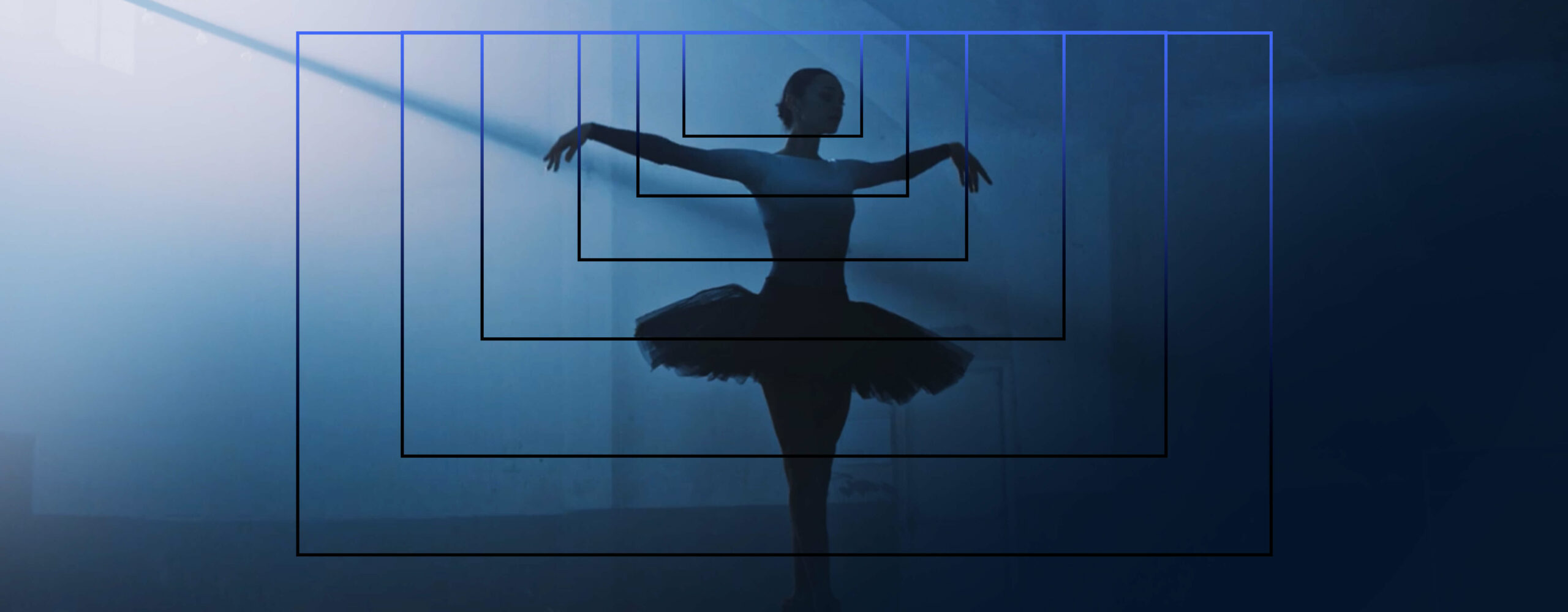Highlights
Table of Contents
Explore article topics
When you’re plotting your movie, documentary or video, the chances are that you won’t want to maintain the same distance and angle between your camera and your subjects for the entire sequence. It wouldn’t be very engaging for your audience, for a start. But more than that, varying your camera angles and types of shots is a vital storytelling tool that helps to convey emotional and geographical context. When you shoot from above, below, close-up or far away, you change how your audience relates to and understands your characters and story. Getting to grips with different types of camera shots is an essential building block of your filmmaking knowledge.
What is a camera shot size?
The size of your subjects relative to the frame is known as the camera shot size or type, and it’s a critical element of the narrative in filmmaking. Knowing whether you want an extreme long shot or a cowboy shot has a significant impact on your storytelling. Writing them into your shot list will assist with your production and save you time, money and stress.
There are 3 basic types of camera shots:
- The close-up – emphasizing detail and highlights emotion
- The medium shot – balancing character with environment
- The long shot – providing context and a sense of location.
Each shot type progressively includes more of your subject within the frame. But you can break down these shots further to give you even more flexibility and creativity.
Your shot size doesn’t automatically determine what type of cinematic lens you’ll be using, as that’s a different creative decision, but it’s still something to consider. You can read up on what a wide-angle lens is here and which are the best wide-angle lenses to see how you might want to use it for a wide shot, but also how they can be used for close-up shots.
Get unlimited royalty-free 4K footage
We’ve put together a shot list for you, with examples of shot types in film, to show you how to make the most out of them and, therefore, your filmmaking.
Shot sizes
This shot size chart should give you an idea of what the different camera shots look like.

Extreme wide or extreme long shot (EWS/ELS)
Extreme wide or extreme long shots are frequently used as establishing shots. With a high ratio of location to subject, they set the scene and provide context for the audience. They can also be used to suggest the isolation of your subject, unfamiliarity with the location, or give a feeling of being overwhelmed or distant.
Here the environment is very much a driver in the story.
And in this scene from The Power of the Dog, the sprawling scenery is just as much a character as the people
Wide shot or long shot (WS/LS)
A wide or long shot usually shows your subject from top to toe, although they won’t fill the frame completely. However, there is still plenty of background included in the shot to give context, set the scene and show your subject’s place in the world of your film.
This shot doesn’t just show these boys playing football, but where, too.
This wide shot from West Side Story is all about dancing in the street in America:
Full shot (FS)
The full shot shows your subject head to toe and filling the frame. The emphasis in full shots tends to be on activity and action rather than on emotion.
This starts as a full shot but shifts to more of a long shot. The emphasis is on movement and dynamism.
Costumes were a major player in Cruella, which means it contained lots of full shots, like this one:
But the intensity of Estella’s character change gives lots of opportunities for close-ups, too.
Medium wide or medium long shot (MWS/MLS)
A medium-long shot, or a medium-wide shot, or a ¾ shot, comes somewhere between a full shot and a medium shot. It shows someone from the knees upwards.
See how this shot is mostly knees-upwards?
This medium-wide shot from Django Unchained also makes use of the low angle show to add power to the character
Cowboy shot (CS)
A cowboy shot is a variation on the medium shot. It’s just a little longer than a medium shot, enough to be able to include a gun holster in the shot, and came from Westerns in the 30s and 40s.
This shot includes the hips as well as the waist to show where a gun would be slung in its holster.
Coming from hip-level, this cowboy shot isn’t from a Western, classic or modern, but from Fight Club:

Medium shot (MS)
A medium shot shows your character from the waist upwards. This type of shot allows you to convey emotion and character but still includes the environment. Medium shots are good for conversations and feel very much like a staple in the filmmaking world.
This medium shot is the perfect means to capture the tenderness between mother and baby.
In this scene from Licorice Pizza, Alana Haim is shot with a medium shot, while Cooper Hoffman is shot with a medium close-up, enhancing Alana’s uncomfortableness:
Medium close-up (MCU)
When you frame someone from the chest or shoulders up, it’s a medium close-up. This is another type of camera shot that can be used to connect the subject to the audience and be used to communicate emotions.
This medium close-up contains plenty of emotion, but context, too.
This medium close-up from Cruella combines emotional intensity with a hint of background:
Close-up (CU)
A close-up shot is tightly framed and fills the frame with a subject’s face. This type of shot is used to capture details and reactions in your subject as well as reveal their emotional state. Remember that a close-up doesn’t have to be of a person. It can be of an object or motif that is somehow significant to or symbolic of the story you’re telling.
This close-up allows you to engage with the subject.
These close-up shots from The Good, the Bad and the Ugly really convey each character’s state of mind during their mexican standoff
Extreme close-up (ECU)
If close-up shots are intense, extreme close-up shots are extremely intense. They usually focus on a closely cropped area of your subject’s face–for example, the eyes, nose and mouth. They are used to emphasize emotion, often without the subject having to say much or even anything at all. Extreme close-ups are powerful narrative devices and can be used to direct your audience to important points within the story.
With the emphasis on the eyes, this is an intense image.
During the same Mexican standoff in The Good, the Bad and the Ugly tensions reach their peak when the shots turn to extreme close-ups.
Wrap-up
By combining different camera shots with various camera angles, filming techniques and camera movements, you give yourself an array of narrative tools that bring your story to life. It allows you to engage your audience and make them relate to your characters more meaningfully. For example, you can use a dolly shot to gradually bring your audience closer to your subject, highlighting and intensifying their emotions as you do so.
A handheld camera shot can create a sense of urgency or intimacy that you don’t get otherwise. Think about what you’re trying to say with your story and build your shot list to support and enliven it. It’s amazing how getting in a bit closer or taking a few steps back will change how your audience interacts with your characters. Go experiment with different shot types in film and see their impact.
Daniela is a writer and editor based in the UK. Since 2010 she has focused on the photography sector. In this time, she has written three books and contributed to many more, served as the editor for two websites, written thousands of articles for numerous publications, both in print and online and runs the Photocritic Photography School.
Share this article
Did you find this article useful?
Related Posts
- By Artlist
- 8 MIN READ
- By Artlist
- 12 MIN READ
- By David Harris
- 5 MIN READ
Latest Posts
- 17 Apr
- By Daniela Bowker
- 7 MIN READ
